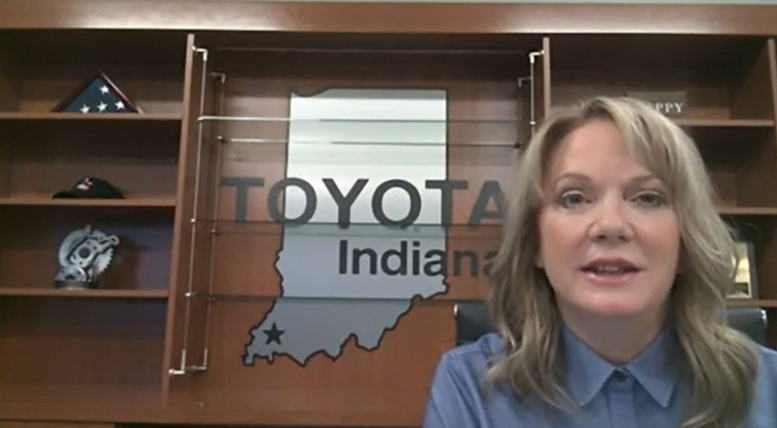Leah Curry initially thought she wanted to be a chemist. But once she got to college, she decided conducting chemical analysis in a lab wasn’t for her. But fixing lab equipment did make her realize that she liked to troubleshoot machines. So she returned to school to study industrial electronics.
Curry now is president of Toyota Motor Manufacturing, Indiana.
When it comes to helping youths decide on a possible career, Curry said offering them career and technical education (CTE) programs to explore jobs in different fields is essential. And it should be done sooner than college.
“If I was exposed to technical or STEM programs before college, I would have landed on my pathway much sooner,” Curry said Wednesday at a Senate subcommittee hearing on youth apprenticeships.
Getting to schools
Curry would like to see students and families — and even high school guidance counselors — check out CTE while in middle school to help overcome a stigma about manufacturing careers. She noted Toyota has created K-12 programs to allow students to explore STEM and career pathways. Her plant occasionally holds an open house and invites parents, noting that many haven’t been in manufacturing plant and are usually surprised by the technology.
In addition, Toyota has collaborated with community colleges across the country on its successful advanced manufacturing technician program. More than 1,300 students have graduated from the program since 2010, with more than 500 graduating since 2020 despite the pandemic, Curry said.
Noel Ginsburg, founder and CEO of CareerWise, an apprenticeship intermediary in Colorado focused in youths, agreed that it would be helpful to let students and families explore CTE at an earlier age. His company, which he started in 2017 after he ran his own manufacturing company, works to promote youth apprenticeships and help companies and schools start them. He agreed that K-12 counselors needed better information about CTE and apprenticeships to help expand career options for students.
“This is not a quick fix, but it is transformational,” he said at the Employment and Workforce Safety Subcommittee hearing. He added: “If other countries can do this, we can do it better.”
Bringing up IRAPs
Sen. Mitt Romney (R-Utah) noted a fairly new apprenticeship program between Salt Lake Community College and Stadler Rail, a Swiss company that builds rail cars, that starts in high school and continues through community college. Fifteen students are currently enrolled.
Romney also mentioned the program was created under the Trump administration’s so-called industry-recognized apprenticeship programs (IRAPs), which allows business and industry to bypass many requirements set in registered apprenticeship programs. Romney noted that the Biden administration has essentially dropped IRAPs in favor of focusing solely on registered apprenticeships, and he asked the panelists their thoughts on that.
Ginsburg said the goals of IRAPs were important: streamline the apprenticeship system, improve program quality and make programs more responsive to industry needs. However, there was confusion in the field about having two federally recognized apprenticeship programs, he said.
“Whatever model we use, we must make sure it responds to business and industry,” Ginsburg said. “Because if it’s not industry-led, it’s not scalable.”
A plug for short-term Pell
Sens. Rob Portman (R-Ohio) and Tim Kaine (D-Virginia) took the opportunity at the hearing to pitch their bipartisan bill that would allow Pell grants to cover certain quality short-term training programs. Portman noted the JOBS Act was included as a manager’s amendment in trade legislation earlier this year, but it was ultimately excluded. Portman said he hopes to find another vehicle for their bill this year, noting the critical importance as employers struggle to find workers in almost every industry.
“Every community college in our state is now focused more and more on this,” he said, referring to CTE and short-term training. “It’s the best way to fix the jobs gap that we see.”
Kaine noted that he would like to see more CTE exploration among middle school students and counselors. He said high school students are expected to select courses based on what they want to do after high school, but they are often not aware of the wide variety of career options, include technical and trade careers.

